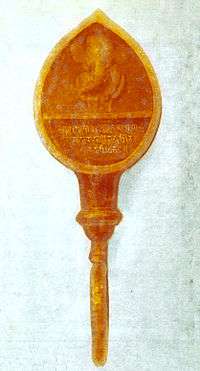Pala dynasty (Kamarupa)
| Kamarupa Kingdom | |||||||||||||||
|---|---|---|---|---|---|---|---|---|---|---|---|---|---|---|---|
| 900 CE–1100 CE | |||||||||||||||
| Capital | Durjaya (present-day North Guwahati), Kamarupanagara (present-day North Guwahati) | ||||||||||||||
| Religion | Hinduism | ||||||||||||||
| Government | Monarchy | ||||||||||||||
| Maharajadhiraja | |||||||||||||||
• c. 900 - c. 920 | Brahma Pala | ||||||||||||||
• c. 920 – c. 960 | Ratna Pala | ||||||||||||||
• c. 960 – c. 990 | Indra Pala | ||||||||||||||
• c. 990 – 1015 | Go Pala | ||||||||||||||
• c. 1015 – c. 1035 | Harsha Pala | ||||||||||||||
• c. 1035 – c. 1060 | Dharma Pala | ||||||||||||||
• c. 1075 – c. 1100 | Jaya Pala | ||||||||||||||
| Historical era | Classical India | ||||||||||||||
• Established | 900 CE | ||||||||||||||
• Disestablished | 1100 CE | ||||||||||||||
| |||||||||||||||
| Part of a series on the | ||||||||||||||||||||||||||||
| History of Kamarupa | ||||||||||||||||||||||||||||
|---|---|---|---|---|---|---|---|---|---|---|---|---|---|---|---|---|---|---|---|---|---|---|---|---|---|---|---|---|
 | ||||||||||||||||||||||||||||
| Ruling dynasties | ||||||||||||||||||||||||||||
|
Varman dynasty (350–650 CE)
|
||||||||||||||||||||||||||||
|
Mlechchha dynasty (650–900 CE)
|
||||||||||||||||||||||||||||
|
Pala Dynasty (900–1100 CE)
|
||||||||||||||||||||||||||||
The Pala dynasty of Kamarupa kingdom ruled from 900 CE. Like the Pala dynasty of Bengal, the first ruler in this dynasty was elected, which probably explains the name of this dynasty "Pala". But unlike the Palas of Bengal, who were Buddhists, the Palas of Kamarupa were Hindus. The Hindu orthodoxy drew their lineage from the earlier Varman dynasty and thus ultimately from Narakasura.
The Pala dynasty came to an end when Kamarupa was invaded by the Gaur king Ramapala (c. 1072-1126). Timgyadeva was made the governor of Kamarupa who ruled between 1110 and 1126. Timgyadeva threw off the yoke of the Pala king and ruled independently for some years when he was attacked and replaced by Vaidyadeva under Ramapala's son Kumarapala. Vaidyadeva, who ruled between 1126 and 1140, declared independence within four years of his rule after the death of Kumarapala. Both Timgyadeva and Vaidyadeva issued grants in the style of the Kamarupa kings (three copper plates attached to the seal of the Kamarupa kings by a ring).
Rulers
- Brahma Pala (900-920)
- Ratna Pala (920-960)
- Indra Pala (960-990)
- Go Pala (990-1015)
- Harsha Pala (1015-1035)
- Dharma Pala (1035-1060)
- Jaya Pala (1075-1100).
References
- Sircar, D. C. The Bhauma-Naraka or the Pala Dynasty of Brahmapala, The Comprehensive History of Assam, ed H. K. Barpujari, Guwahati, 1990.